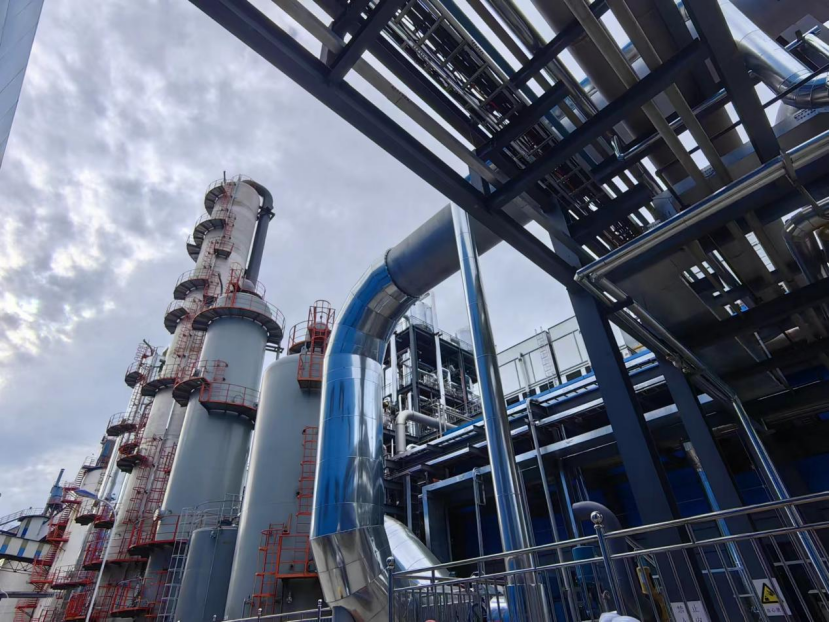Carbon dioxide trapped in the flue gas at the tail of cement kiln has been utilized as resources and commercially
It was early autumn, and the residual heat had not disappeared. Bags of dry ice were neatly stacked in ultra-thick PE storage boxes at the elevator entrance of the workshop, quietly radiating cold air around. In the dry ice production area of the cement kiln tail flue gas carbon dioxide capture production demonstration line of Beijing Jinyu Beishui Environmental Protection Technology Co., Ltd.(hereinafter referred to as Beishui Company), the reporter saw a storage box full of bags of dry ice placed in the factory, waiting for shipment and sale.
"These are carbon dioxide captured and stored from the flue gas at the tail of cement kilns, and the temperature is about-75℃." Wang Yichun, senior engineer of Beishui Company, told reporters with a box of packed dry ice.
It is understood that the current domestic production of one ton of cement clinker emits about 0.85-0.9 tons of carbon dioxide, of which limestone decomposition accounts for about 0.6 tons. In the future, even if all alternative fuels and new energy sources are used and the use of raw materials is increased, there will still be nearly 0.6 tons of carbon dioxide emissions. Against the background of the cement industry entering the carbon trading market, cement companies have begun to pay close attention to and begin to explore and implement carbon capture, storage, and utilization technologies.
"This is the second cement kiln carbon capture process line in China, but it is the carbon capture project with the most complex flue gas environment, the highest product standard requirements, and the lowest comprehensive energy consumption in the field." Wang Yichun said that the concentration of carbon dioxide captured and sealed in our production line is over 99.9%, reaching the national food grade standard of "National Food Safety Standard Food Additives Carbon Dioxide"(GB1886.228-2016).

Beijing Jinyu Beishui Environmental Protection Technology Co., Ltd. demonstration production line for carbon dioxide capture, storage and resource utilization.
According to reports, the project has high process standards, complex structure, and difficult organization. For example, the carbon dioxide device area includes a cooling and dust removal tower, pretreatment tower, absorption tower, desorption tower, rectification tower, heat exchanger, induced draft fan, and transfer pump., process pipelines and other complete production lines of process equipment used to capture carbon dioxide from cement kiln flue gas. It is understood that the entire process has installed a total of 36 transfer pumps of various types, 2 large compressors, 2 refrigerators, 22 heat exchangers of various types, 14 storage tanks of various types, 14 towers of various types, and professional storage tanks. 2 sets, process pipeline welds are about 50,000 meters.
"This process mainly captures low-concentration carbon dioxide in the flue gas at the tail of cement kiln and uses chemical absorption carbon dioxide capture technology to recover carbon dioxide, that is, non-ethanolamine absorbent absorbs carbon dioxide in the tail gas at low temperatures and at high temperatures. Carbon dioxide is released, and after undergoing rectification and other processes, it is finally produced into liquid carbon dioxide and dry ice." Wang Yichun said.
It is understood that carbon dioxide can be widely used in frozen food, precision instrument and equipment cleaning, beer or beverages, chemical industry, medicine, agricultural fertilization, microalgae carbon fixation, bactericides, oil displacement and other uses. It can be said that the market prospects are broad. According to statistics, my country's dry ice market demand will reach 573,100 tons/year in 2022, and the demand for dry ice in Beijing City alone will reach 80,000 tons/year.
"Currently, the entire production line is in the trial operation stage, with a product scale of 70,000 tons/year of food-grade dry ice and 30,000 tons/year of liquid carbon dioxide." Wang Yichun said that after the project is put into operation, it will solve some key technical issues in the green development of the cement industry, which is of great significance to the green and low-carbon development of the cement industry.







